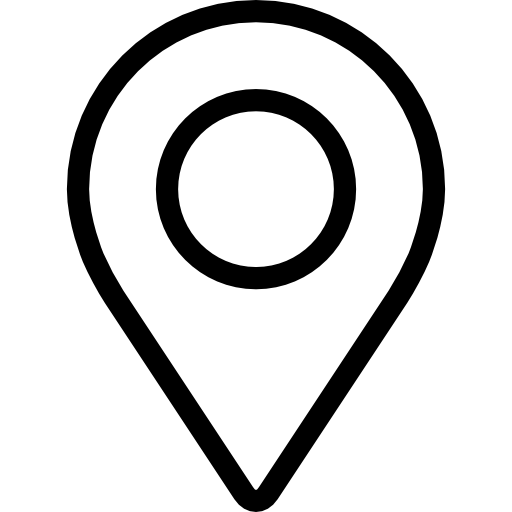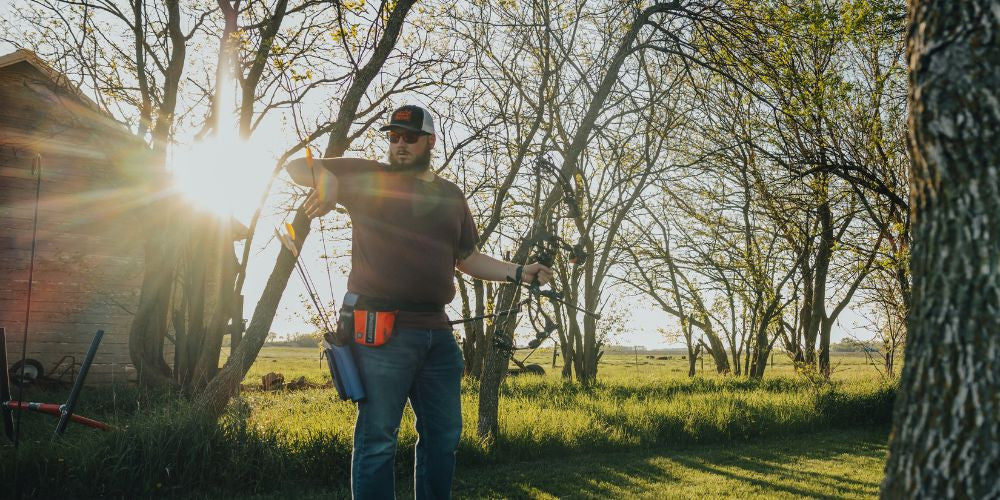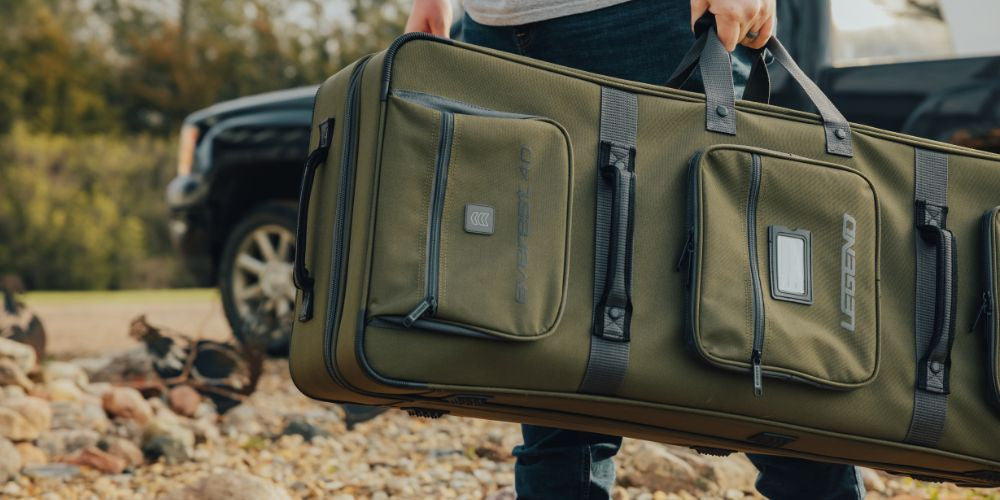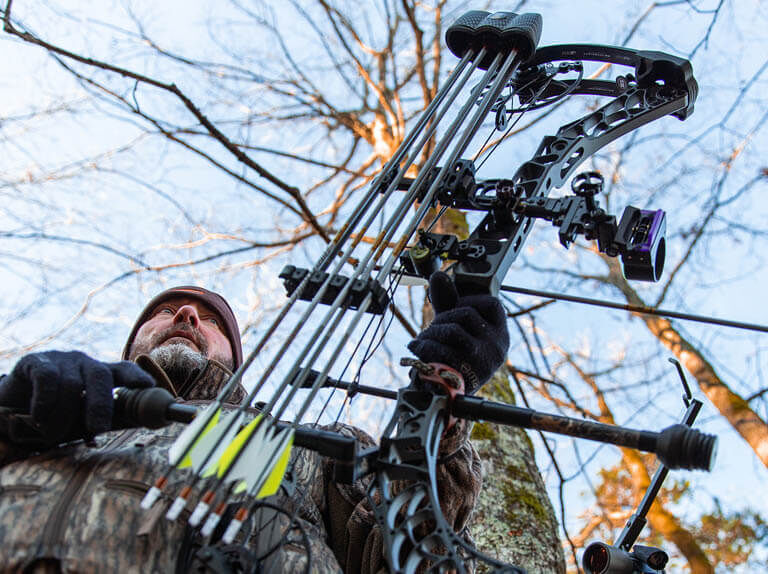When it comes to archery, having the right equipment can make all the difference. One of the most important pieces of archery gear is the bow, and choosing the right one can be a daunting task as there are several essential factors to consider. With so many options available on the market, it's essential to know what to look for in order to make an informed decision. In this article, we will provide you with four essential pieces of advice that will help you find the perfect bow for your needs.
Purpose
Whether you're buying your first bow or looking to upgrade your current bow, the first thing to consider is the purpose of your bow. Are you looking to hunt big game or small game? Will you be using it for target practice or competitions? Knowing the intended purpose of your bow will help you determine the proper draw length, draw weight, bow length, and other specifications necessary for your specific needs.
-
Bowhunting:

If you plan on using your bow for hunting, you'll want to consider the size of the game you'll be hunting. A higher draw weight will be necessary for larger games, while a lower bow weight may be sufficient for small games. Additionally, you'll want to consider the type of hunting you'll be doing. A longer bow may be more stable and accurate for long-range shots, while a shorter bow may be more maneuverable for close-range shots.
-
Target Shooting:
If you intend on being a target archer, you should consider the type of shooting you'll be doing. Long-distance shootings may require a higher draw weight, while for shorter distances, a lower bow weight may work just fine. You also want to consider the type of targets you'll be using. Longer bows are more stable and accurate for larger targets, while the opposite goes for smaller targets.
-
Competition:

If you plan on using your bow for competition, you'll want to consider the type of competition you'll be participating in. Different competitions may have different rules and regulations regarding bow type, draw weight, and bow length. While there are competitions where you can use a recurve bow, compound bow, or any of the other different bows, some competitions, like the Olympics, only allow participants to shoot with recurve bows. Additionally, you'll want to consider the type of targets you'll be shooting at.
Draw Weight
The draw weight of a bow refers to the amount of force required to pull the bowstring back. A higher bow weight means more power and energy behind your arrow, but it also means more effort is required to hold the bow steady. It's important to find a balance between power and comfort when choosing a draw weight. A good rule of thumb is to choose a bow weight that you can comfortably hold for at least 30 seconds.
-
Beginners:
If you're new to archery and are buying your first bow, it's important to start with a lower bow weight. A draw weight of around 20-30 pounds is a good starting point for either a recurve or compound bow. As you become more comfortable and confident with your bow, you can gradually increase the bow weight.
-
Intermediate:
If you've been shooting for a while and have a good amount of experience under your belt, you can consider a draw weight of around 30-40 pounds. This will give you more power and energy behind your arrow, but you'll still be able to hold the bow steady.
-
Advanced:
If you're an experienced archer or bowhunter, you may want to consider a draw weight of 40 pounds or more. This will give you the most power and energy behind your shots, but it will also require significant effort to hold the bow steady.
Bow Length
The length of a bow also plays a role in determining the appropriate bow for your needs. A longer bow will typically offer more stability and accuracy, while a shorter bow is more maneuverable and easier to handle. Consider your physical build and the type of archery you'll be practicing when choosing a bow length.
-
Short:
A shorter bow will typically be around 48-54 inches in length. This is a good option for smaller individuals or for close-range shots. A shorter bow is also easier to handle and maneuver in tight spaces.
-
Medium:
A medium-length bow will typically be around 54-60 inches in length. This is a good option for individuals of average height and build and is suitable for a wide range of shooting situations.
-
Long:
Longer bows will typically be around 60 inches or more in length. This is a good option for taller individuals or for long-range shots. Longer bows offer more stability and accuracy but can be more difficult to handle and maneuver in tight spaces.
Quality
Lastly, it's important to invest in a high-quality bow that is built to last. Beginners are sometimes advised to start with lower-priced bows and basic accessories. But when it comes to purchasing bows in an archery shop, quality is an essential factor to consider. High-quality bows not only perform better but will also last longer and require less maintenance. Shop for brands that have a reputation for producing durable and reliable equipment. Remember, bows are not a cheap purchase, so it's worth spending a little extra budget to ensure that you're getting a product that will serve you well for years to come. Below are what to look for to ensure you're getting a high-quality product.
-
Brand reputation
One of the most important things to consider when buying a bow is the reputation of the brand. Look for brands that have a good reputation among archers and bowhunters. Do your research and read reviews from other customers. Look for brands with a history of producing high-quality bows built to last.
-
Materials
The type of materials used to construct the bow is also an important factor to consider. Look for bows made with high-quality materials such as carbon fiber, aluminum, and wood. These materials are known for their durability and ability to withstand heavy use.
-
Build quality
When inspecting bows, pay attention to the build quality. Look for bows that are constructed with precision and attention to detail. The bow should be smooth and well-balanced, with no loose parts or rattling sounds. The bowstring should be tight and in good condition.
-
Warranty
Another critical factor to consider is the warranty offered by the manufacturer. A good warranty will protect your investment in the event that something goes wrong with the bow. Look for brands that offer a warranty of at least one year, and make sure to read the terms and conditions of the warranty carefully.
-
Professional opinion

Consulting with an archery or bowhunting expert, or going to a pro archery shop, can also be a great way to ensure you're getting a high-quality bow for your budget. These professionals have years of experience and can provide valuable insight into the best options for your specific needs and preferences. They can also give you hands-on demonstrations and help you to compare different models and brands.
Conclusion
Buying a bow is a big investment, and it's important to take the time to consider your needs and find the right equipment for you. By keeping these factors in mind and doing your research, you can ensure that you're getting a high-quality new bow and bow accessories that are well-suited to your needs and preferences. With the right bow, you'll be able to enjoy your archery experience to the fullest.
 cust@legendarchery.com
cust@legendarchery.com 302 503 5767
302 503 5767 Sauk Village IL 60411
Sauk Village IL 60411


